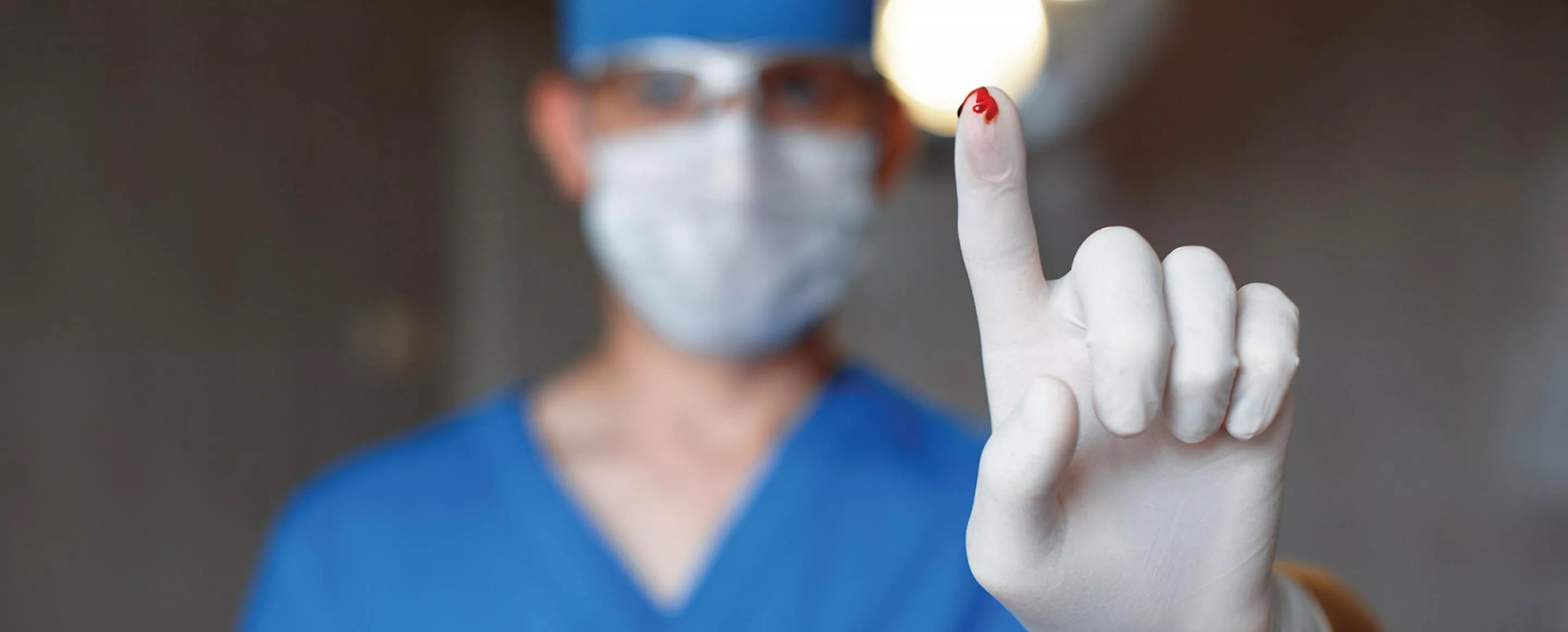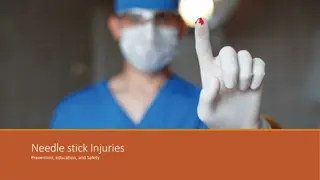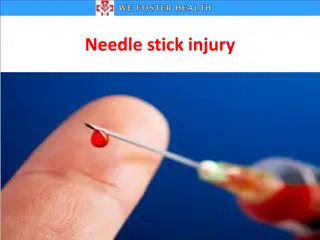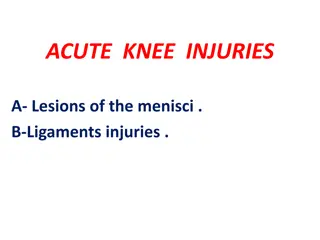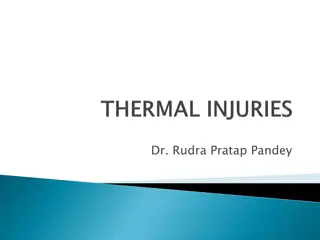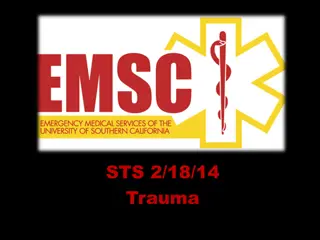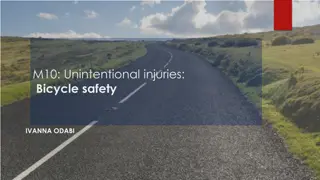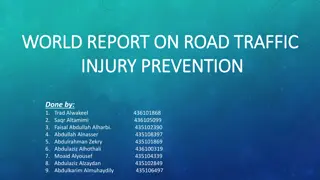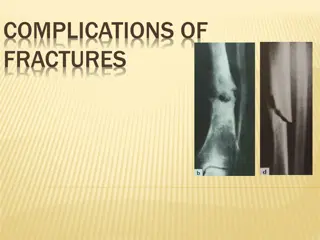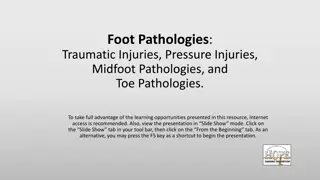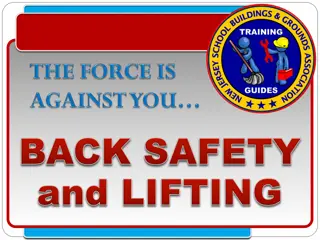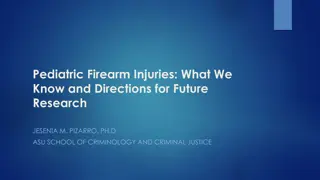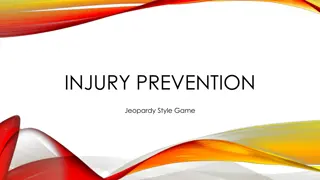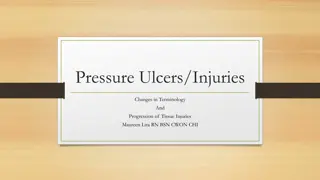Needlestick Injuries Prevention and Safety
Prevent needlestick injuries by avoiding unnecessary needle use, using devices with safety features, and implementing safe work practices. Healthcare professionals should report injuries promptly, participate in training, and get vaccinated. Be cautious when handling surgical sharps to prevent injuries. Education, safety features, and proper disposal are key in preventing needlestick injuries and ensuring a safe healthcare environment.
Download Presentation

Please find below an Image/Link to download the presentation.
The content on the website is provided AS IS for your information and personal use only. It may not be sold, licensed, or shared on other websites without obtaining consent from the author.If you encounter any issues during the download, it is possible that the publisher has removed the file from their server.
You are allowed to download the files provided on this website for personal or commercial use, subject to the condition that they are used lawfully. All files are the property of their respective owners.
The content on the website is provided AS IS for your information and personal use only. It may not be sold, licensed, or shared on other websites without obtaining consent from the author.
E N D
Presentation Transcript
Needle stick Injuries Prevention, education, and Safety
Educational Video - Needle Stick Injuries https://www.worksafebc.com/en/resources/health- safety/videos/preventing-needlesticks?lang=en
OSUMC OSUMC Needle Sticks & Needle Sticks & Exposures Exposures 2020 29 Total Needle Sticks 5 Total Splashes 13 Resident Needle Sticks 1 Resident bodily fluid exposure/splash 2021 27 Total Needle Sticks 16 Total Splashes 10 Resident needle Sticks 4 Resident bodily fluid exposures/splash 2022 31 Total Needle Sticks 14 Total Splashes 13 Resident needle sticks 6 Resident bodily fluid exposures/splashes 2023 33 Total Needle Sticks 11 Total Splashes 17 Resident needle sticks 4 Resident bodily fluid exposures/splash
Prevent needlestick injuries Needlestick injuries can be avoided by eliminating the unnecessary use of needles, using devices with safety features, and promoting education and safe work practices for handling needles and related systems. As a healthcare professional, you can protect yourself from a needlestick injury by: Avoiding the use of needles where safe and effective alternatives are available Helping your employer select and evaluate devices with safety features that reduce the risk of needlestick injury Using devices with safety features provided by your employer Avoiding recapping needles Planning for safe handling and disposal of needles before using them Promptly disposing of used needles in conveniently placed and appropriate sharps disposal containers Reporting all needlestick and sharps-related injuries promptly to ensure that you receive appropriate follow-up care Telling your employer about any needlestick hazards you observe and promptly reporting any needlesticks and near-misses Participating in training related to infection prevention Getting a hepatitis B vaccination https://www.cdc.gov/
Preventing Surgical Sharps Injuries Be aware of the environment- handle all sharps cautiously including: Suture, scalpels, sternal wires, trocars, hypodermic needles, sharp retractors, drill bits, needle tipped bovie tips, etc. A Suturing: Ensure the incision field is clear of other surgical team member s hands When suturing, the non-dominant hand should be holding forceps to pick up the suture as it comes through the skin (photo A) Never pick up the suture with hands- always use an instrument When not using the needle it should be safely guarded against the needle driver (photo B) Ensure the tip of needle is protected when passing All sharps that are not in use should be passed to the Surgical Tech or placed on a table or mayo stand away from the field B When using a scalpel enact the safety cover before passing Bovies should be placed in the hard holster when not in use
Please clink the link below: How To - Suture Safety #ubcmedicine - YouTube
What to do if you experience a needlestick injury If you experienced a needlestick injury or were exposed to the blood or other body fluid of a patient during the course of your work, immediately follow these steps: Wash needlesticks and cuts with soap and water Flush splashes to the nose, mouth, or skin with water Irrigate eyes with clean water, saline, or sterile irrigants Report the incident to your supervisor Immediately seek medical treatment -Contact EHS Immediately during business hours 918-599-5108 -ED Charge nurse for after hours/weekends
Common ways employees have needle sticks or exposures Recapping needles Scalpel Splashes Passing sharps Suturing
Educational Video - Needle Stick Injuries https://www.google.com/url?sa=t&rct=j&q=&esrc=s&source=vi deo&cd=&cad=rja&uact=8&ved=2ahUKEwjOhbyRjvr- AhX_mWoFHdCUBtgQtwJ6BAgIEAI&url=https%3A%2F%2Fwww .youtube.com%2Fwatch%3Fv%3DPEI9QmGErWs&usg=AOvVaw 1qTImo0PPJRPRO_flmfSlc
Questions? Phone: 918-599-5108 Email: mrind@osumc.net
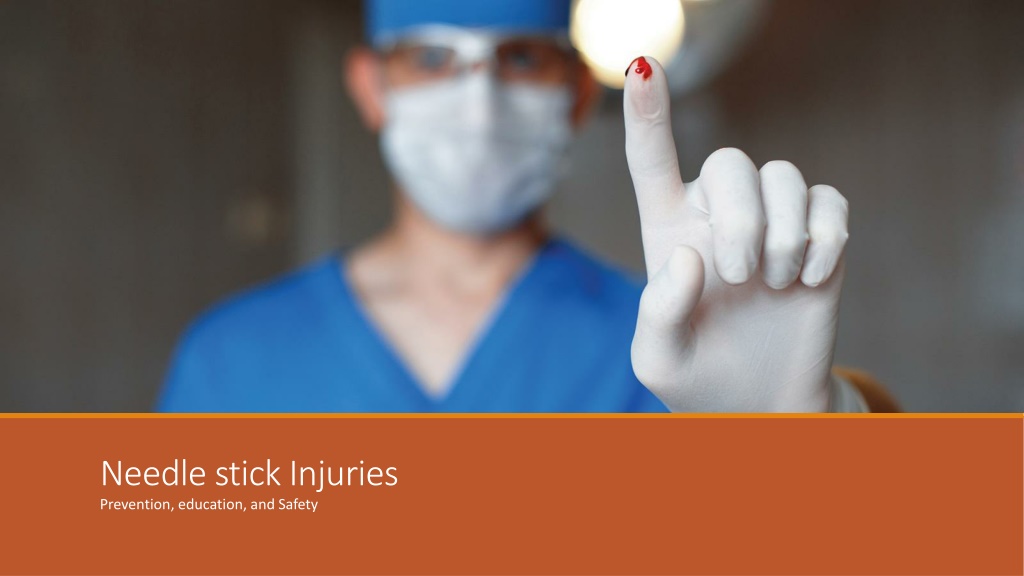
 undefined
undefined

